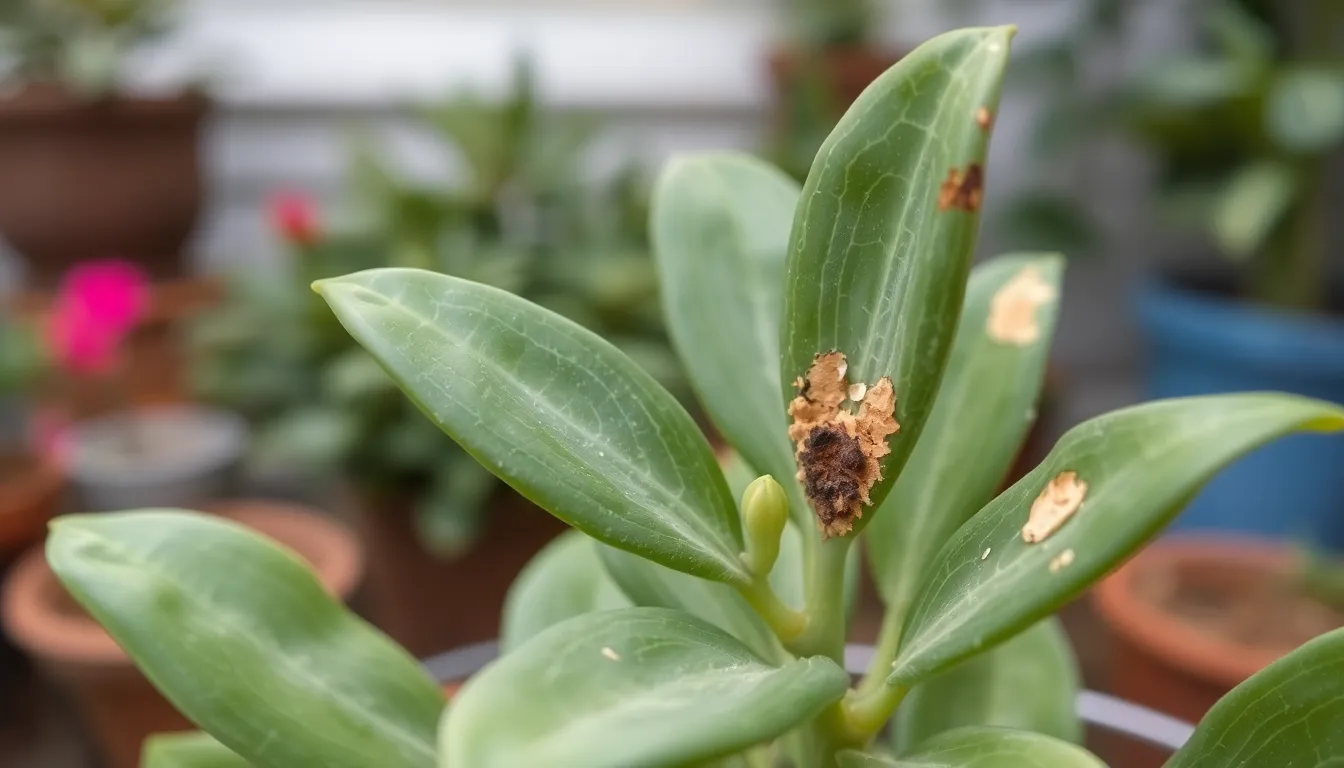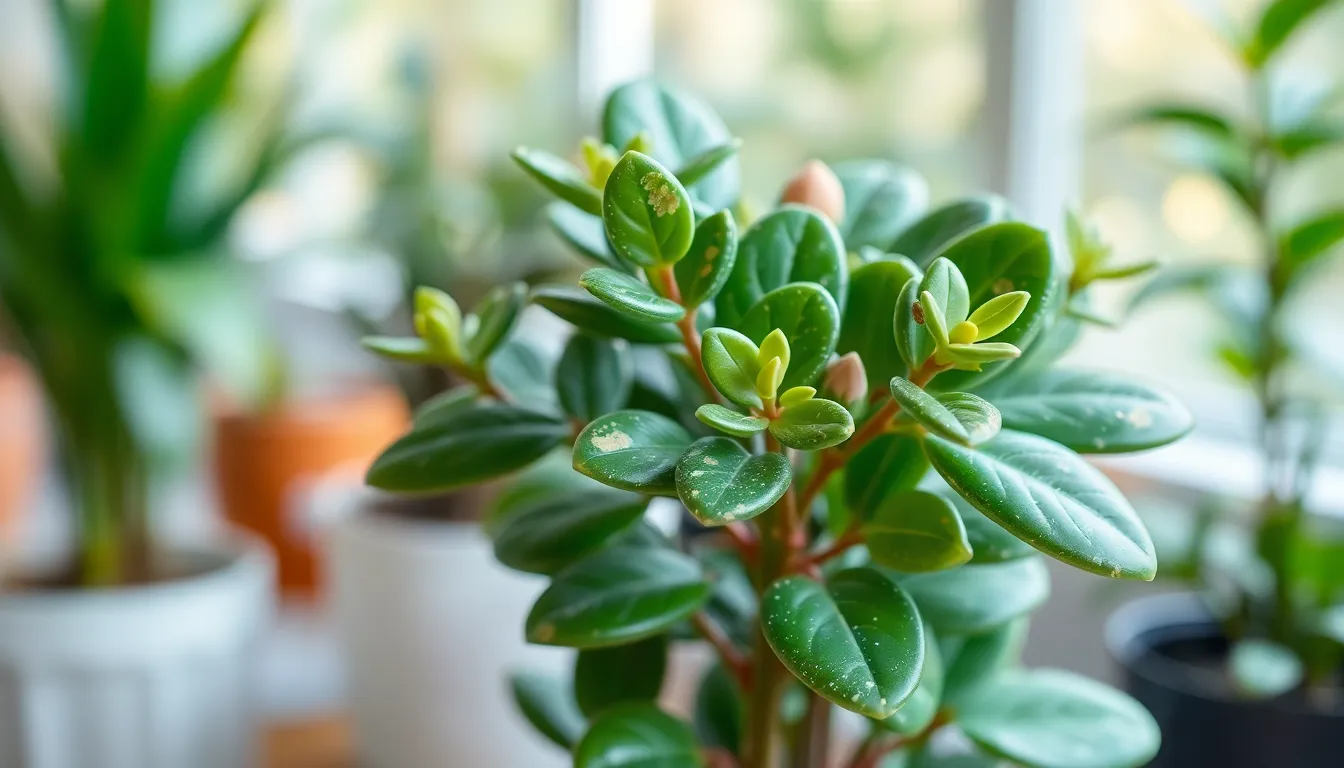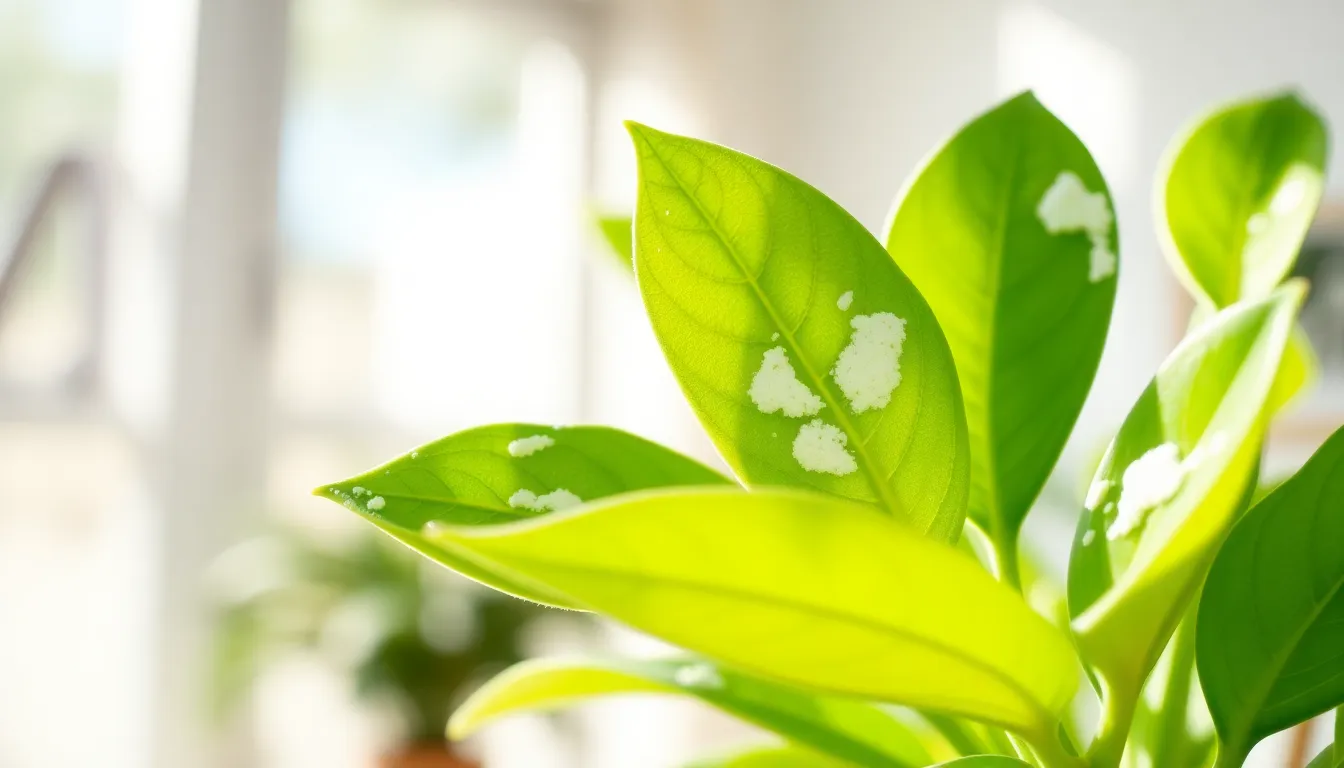Jade plants are the beloved succulents that bring a touch of green to homes and offices, but even the most resilient plants can face a few hiccups along the way. Imagine nurturing your jade only to discover it’s got a case of the blues—or worse, a fungal infection! Fear not, plant enthusiasts. Understanding jade plant diseases is key to keeping your leafy friend thriving.
In this guide, you’ll explore common jade plant ailments through vivid photos that’ll make you laugh and cringe at the same time. From pesky pests to mysterious spots, these images will help you diagnose issues faster than you can say “green thumb.” So grab your watering can and let’s dive into the world of jade plant diseases—because a healthy plant is a happy plant, and who doesn’t want a little more joy in their life?
Jade Plant Diseases Photos
Jade plants face several diseases that affect their growth and vitality. Root rot occurs frequently due to overwatering or poor drainage, leading to wilting leaves and a foul odor from the soil. Fungal infections, like leaf spot, manifest as dark spots on leaves, which may indicate fungal development. Identifying these symptoms promptly aids in treatment.
Powdery mildew presents as a white, powdery substance on leaves. This fungal disease thrives in humid conditions and can spread rapidly. Spider mites also pose a threat, causing stippling and webbing on leaves. High temperatures and dry air often exacerbate this issue.
Bacterial infections can lead to soft rot, causing mushy, discolored areas on stems and leaves. Treating this involves cutting away affected areas and reducing humidity. Scale insects often appear as small, raised bumps on stems and leaves, leading to yellowing and leaf drop. Effective treatment includes insecticidal soap or neem oil.
Pests like aphids may also infest jade plants, resulting in distorted leaves and stunted growth. Monitoring plants regularly helps detect these symptoms early. Correcting cultural practices can often prevent these diseases, like ensuring adequate airflow and avoiding overcrowding.
Understanding these jade plant diseases helps owners maintain healthy plants. Knowledge about symptoms and treatments maximizes the chances of recovery. It’s crucial to act quickly at the first sign of trouble to ensure jade plants thrive.
Common Jade Plant Diseases


Understanding jade plant diseases helps maintain a healthy plant. Below are some common diseases that jade plants face.
Powdery Mildew
Powdery mildew appears as a white, powdery coating on jade leaves. This fungal disease thrives in humid environments with poor air circulation. Affected plants may exhibit curling leaves and stunted growth. Managing humidity levels and ensuring proper airflow can reduce the risk of infection. If powdery mildew develops, applying a fungicide can help restore plant health.
Leaf Spot
Leaf spot manifests as dark, water-soaked lesions on jade leaves. Bacterial infections often cause this condition, exacerbated by overwatering and poor drainage. Affected leaves may yellow and drop prematurely. Removing infected foliage and adjusting watering practices can control and prevent leaf spot. Using a copper-based fungicide may also aid in treatment.
Root Rot
Root rot emerges when jade plants endure excessive moisture in the soil. Symptoms include wilting leaves, foul odors from the soil, and darkened roots. To combat this, it’s crucial to ensure well-draining soil and avoid overwatering. If detected early, repotting the jade plant in dry soil and trimming damaged roots promotes recovery. Regularly inspecting roots can prevent future occurrences of root rot.
Identifying Jade Plant Diseases Through Photos
Identifying jade plant diseases becomes easier with visual references. Understanding symptoms through images helps in quick diagnosis and effective treatment.
Symptom Recognition
Recognizing symptoms early prevents further damage to jade plants. Wilting leaves indicate potential overwatering or root rot issues. Dark spots or water-soaked lesions suggest leaf spot, commonly caused by fungal infections. A white, powdery coating on leaves signals powdery mildew, which thrives in high humidity. Yellowing leaves can arise from bacterial infections or pest infestations like scale insects. By closely examining photos of these symptoms, growers can make informed decisions on treatment strategies.
Comparison With Healthy Jade Plants
Healthy jade plants exhibit vibrant green leaves and sturdy stems. Leaf shape and texture play crucial roles in distinguishing between healthy and diseased specimens. Healthy plants should not display any spots or discoloration. In contrast, diseased plants often show signs of distortion or drooping leaves. Comparing photos of afflicted jade plants with those of healthy ones allows for immediate recognition of problems. With this understanding, preventative measures and interventions can be applied quickly to restore plant vitality.
Treatment Options For Jade Plant Diseases
Addressing jade plant diseases promptly boosts plant health and longevity. Treatment options range from organic remedies to chemical solutions, depending on the severity of the issue.
Organic Remedies
Organic remedies effectively manage jade plant diseases while being safe for the environment. Neem oil stands out as a powerful antifungal and insect repellent. Spraying a diluted solution on affected leaves prevents the spread of fungal infections. Additionally, garlic or chili pepper sprays deter pests, promoting a healthier plant. Improving air circulation and adjusting watering habits significantly reduces the risk of root rot and powdery mildew. Regularly inspecting plants helps catch any early signs of distress.
Chemical Solutions
Sometimes, chemical solutions are necessary for severe jade plant disease. Fungicides specifically formulated for succulents serve to treat fungal infections. Applying them according to label instructions ensures effectiveness while avoiding further harm. Targeted pesticides effectively eliminate pests like aphids and spider mites, though caution is essential to prevent damage to the jade plant. Monitoring the plant’s response to treatments allows for timely adjustments. Keeping the environment stress-free minimizes the likelihood of recurring diseases.
Preventive Measures For Jade Plants
Proper care helps jade plants remain healthy and reduce disease risks. Several practices contribute to this goal.
Proper Watering Techniques
Watering correctly plays a crucial role in jade plant health. Overwatering often leads to root rot, so allowing the soil to dry out between waterings is essential. Adequate drainage in containers prevents water accumulation, further protecting the roots. Observing the leaves offers additional clues; if they’re wilted or soft, it’s a sign of too much water. Conversely, if leaves appear shriveled, the plant may require more hydration. Adjusting watering frequency according to seasonal changes helps maintain balance. Humidity levels also affect watering needs, so monitoring local conditions aids in making informed decisions.
Ideal Lighting Conditions
Optimal lighting conditions significantly impact jade plant vitality. A preference for bright, indirect sunlight supports healthy growth and prevents leggy stems. Placing jade plants near south or west-facing windows often provides the right amount of light. Direct sunlight can scorch leaves, leading to brown edges or spots. Gradual exposure to stronger light also allows plants to acclimate and thrive. Utilizing sheer curtains can diffuse harsh sunlight, creating an ideal environment. Seasonal changes may shift light availability, so adjusting the plant’s position ensures it receives consistent light. Understanding these lighting needs contributes to disease prevention and overall plant health.




